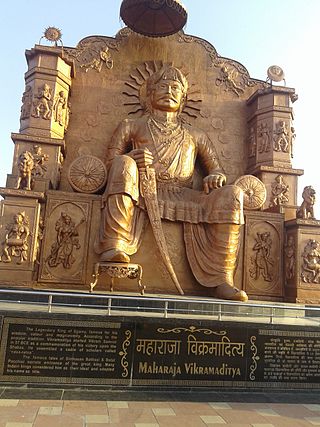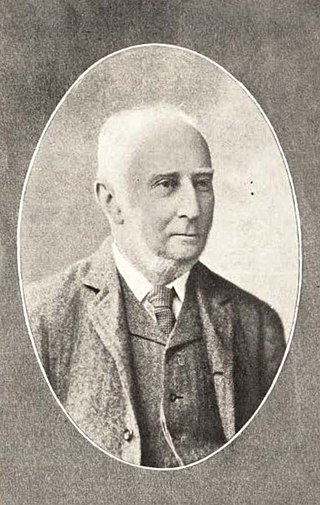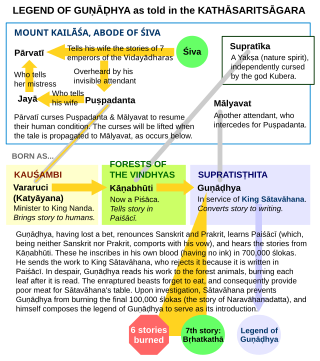
The Panchatantra is an ancient Indian collection of interrelated animal fables in Sanskrit verse and prose, arranged within a frame story. The surviving work is dated to about 200 BCE, but the fables are likely much more ancient. The text's author is unknown, but it has been attributed to Vishnu Sharma in some recensions and Vasubhaga in others, both of which may be fictitious pen names. It is likely a Hindu text, and based on older oral traditions with "animal fables that are as old as we are able to imagine".

Kālidāsa was a Classical Sanskrit author who is often considered ancient India's greatest poet and playwright. His plays and poetry are primarily based on Hindu Puranas and philosophy. His surviving works consist of three plays, two epic poems and two shorter poems.
In Indian literature, Kāma-shastra refers to the tradition of works on Kāma: Desire. It therefore has a practical orientation, similar to that of Arthashastra, the tradition of texts on politics and government. Just as the latter instructs kings and ministers about government, Kāmashastra aims to instruct the townsman (nāgarika) in the way to attain enjoyment and fulfillment.

The Kashmir Shaivism tradition, also called Trika Shaivism, is a non-dualist branch of Shaiva-Shakta Tantra Hinduism that originated in Kashmir after 850 CE. In its place of origin in Kashmir, this tradition is commonly referred to as "Kashmiri Shaivism." It later spread beyond Kashmir, with its great scholar Abhinavagupta calling it "Trika". It particularly flourished in the states of Odisha and Maharashtra. Defining features of the Trika tradition are its idealistic and monistic Pratyabhijna ("Recognition") philosophical system, propounded by Utpaladeva and Abhinavagupta, and the centrality of the three goddesses Parā, Parāparā, and Aparā.
Daṇḍi or Daṇḍin was an Indian Sanskrit grammarian and author of prose romances. He is one of the best-known writers in Asian history.

Vikramaditya was a legendary king mentioned in ancient Indian literature, featuring in traditional stories including those in Vetala Panchavimshati and Singhasan Battisi. Many describe him as ruler with his capital at Ujjain. "Vikramaditya" was also a common title adopted by several monarchs in ancient and medieval India, and the Vikramaditya legends may be embellished accounts of different kings. According to popular tradition, Vikramaditya began the Vikrama Samvat era in 57 BCE after defeating the Shakas, and those who believe that he is based on a historical figure place him around the first century BCE. However, this era is identified as "Vikrama Samvat" after the ninth century CE.

The Kathāsaritsāgara is a famous 11th-century collection of Indian legends, histories and folk tales as retold in Sanskrit by the Shaivite Somadeva.

The Vetala Panchavimshati, or Betal Pachisi, is a collection of tales and legends within a frame story, from India. Internationally, it is also known as Vikram-Vetala. It was originally written in Sanskrit.
Kāvya refers to the Sanskrit literary style used by Indian court poets flourishing between c.200 BCE and 1200 CE.
Bharavi was a 6th century Indian poet known for his epic poem Kirātārjunīya, one of the six mahakavyas in classical Sanskrit.
Jayanta Bhatta was a Kashmiri poet, teacher, logician, and an advisor to King Sankaravarman. He was a philosopher of the Nyaya school of Hindu philosophy. He authored three works on Nyāya philosophy: one of which is not known, an allegorical drama, and a commentary on Pāṇinian grammar.
Vararuci is a name associated with several literary and scientific texts in Sanskrit and also with various legends in several parts of India. This Vararuci is often identified with Kātyāyana. Kātyāyana is the author of Vārtikās which is an elaboration of certain sūtrās in Pāṇini's much revered treatise on Sanskrit grammar titled Aṣṭādhyāyī. Kātyāyana is believed to have flourished in the 3rd century BCE. However, this identification of Vararuci with Kātyāyana has not been fully accepted by scholars. Vararuci is believed to be the author of Prākrita Prakāśa, the oldest treatise on the grammar of Prākrit language. Vararuci's name appears in a verse listing the 'nine gems' (navaratnas) in the court of one Samrat Vikramaditya. Vararuci appears as a prominent character in Kathasaritsagara, a famous 11th century collection of Indian legends, fairy tales and folk tales as retold by a Saivite Brahmin named Somadeva.The Aithihyamala of Kottarathil Shankunni states that Vararuchi was the son of Govinda Swami i.e. Govinda Bhagavatpada. It also states that King Vikramadithya, Bhatti- minister of King Vikramaditya and Bhartruhari were his brothers.

Bṛhatkathā is an ancient Indian epic, said to have been written by Guṇāḍhya in a poorly-understood language known as Paiśācī. The work no longer exists but several later adaptations — the Kathāsaritsāgara (कथासरित्सागर), Bṛhatkathāmañjarī (बृहत्कथामंजरी) and Bṛhatkathāślokasaṃgraha (बृहत्कथाश्लोकसंग्रह) in Sanskrit, as well as the Peruṅkatai and Vasudevahiṃḍi in vernaculars — make commentary on the piece.

Charles Henry Tawney was an English educator and scholar, primarily known for his translations of Sanskrit classics into English. He was fluent in German, Latin, and Greek; and in India also acquired Sanskrit, Hindi, Urdu, and Persian.
Norman Mosley Penzer — known as N. M. Penzer — was a British independent scholar and Fellow of the Royal Geographical Society who specialised in Oriental studies. He translated the tale of Nala and Damayanti in 1926 from Sanskrit.

Guṇāḍhya is the Sanskrit name of the sixth-century Indian author of the Bṛhatkathā, a large collection of tales attested by Daṇḍin, the author of the Kavyadarsha, Subandhu, the author of Vasavadatta, and Bāṇabhaṭṭa, the author of the Kadambari. Scholars compare Guṇāḍhya with Vyasa and Valmiki even though he did not write the now long-lost Brihatkatha in Sanskrit; the loss of this text is one of the greatest losses of Indian literature. Presently available are its two Kashmiri Sanskrit recensions, the Brihatkathamanjari by Kshemendra and the Kathasaritsagara by Somadeva.

Udayana was a king of Vatsa in India, a contemporary of Gautama Buddha. He is a popular figure in Indian literature, for both his romantic and military stories, but though he probably existed, little is known for certain about his life or reign.
Yashas-tilaka is a 10th-century champu Sanskrit text that promotes the Jaina doctrine using the story of king Yashodhara. It was written by the Jaina writer Somadeva, in the Vemulavada Chalukya kingdom of India. The text provides information about the literary and socio-political aspects of the contemporary period, as well as Jaina and non-Jaina philosophical and religious doctrines.









